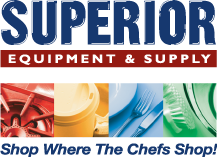Pricing a menu is tricky business: price dishes too high, and you’ll turn off patrons. Price it too low and you’ll cut deep into your profit margins. It’s a skill to find that delicate balance, but here are some tips to help you with your restaurant competitive menu pricing strategy.
Start by Understanding Your Food Costs: Your foundation begins by determining food costs. Each ingredient you purchase for your menu has a per-dish cost, which may vary depending on supply and demand or season. Pull your recipe apart, ingredient by ingredient. And don’t overlook anything, including a tablespoon of olive oil or a sprinkling of salt. These may seem insignificant costs, but they add up across all dishes.
If you use restaurant inventory management software, you should be able to easily see the per-dish cost, since it’s input into your system.
Take into Account Seasonality: Watermelon doesn’t come cheap in the winter…if it can be found at all. As you’re building your menu, realize that some ingredients are seasonal. You have a decision here: offer the dish only when the produce is in season or replace that ingredient with another (risotto is a great platform for whatever is in season).
You can also factor the seasonal fluctuations in price for that ingredient into the price you set for the menu year ‘round. Rather than raising the price of that tomato salad in the winter by $1, you can offset the expected price increase for the dish throughout the year.
Check Out Local Competitors’ Pricing: There’s nothing wrong with doing a little research: find out what nearby restaurants are charging for similar dishes. If you can match or beat the price, you’ll be assured of plenty of business. Charge too much above the competition, and you’ll risk losing customers based on price.
Understand Each Dish’s Potential Profit: One key component of your restaurant competitive menu pricing strategy is to understand margin. Not every dish will have the same profit margin. High-end cuts of meat like steak can be marked up 50% above cost, but salads, appetizers, and desserts can be marked up as much as 80% or more. The strategy here is to sell the items with more margin. Even though your salads & desserts may have a better food cost percentage than your steaks, you will make more from the steaks, albeit at a higher food cost percentage.
Factor in Other Costs: Beyond food costs, you also have to cover your staff’s payroll, overhead, marketing, utilities, et cetera. Factor in a little extra to help cover these costs when pricing dishes for your menu on top of your profit margin to ensure that not only can you pay your expenses, but you also have enough to cover your other expenses.
Get a Pricing Strategy: Now that you’ve got a general idea of what to set prices at for dishes on your menu, it’s time to employ a little psychology. Don’t end your prices with .99. Patrons prefer whole dollars. If you run a higher-end restaurant business, don’t use the $ sign. It’s understood.
Feature dishes that you struggle to sell by highlighting them on the menu or having your wait staff list them as the daily special. This is a great way to get rid of ingredients that will go to waste in a few days if they aren’t used.
Be Cautious When Raising Prices: Once you’ve set menu prices, pause before raising them again soon. People become used to your prices and may balk at paying even $1 more. If you do plan to raise prices, let customers know, especially if something like an egg shortage in your area has impacted what you pay for ingredients. You can always lower prices if you aren’t seeing sales as high of a particular dish as you’d like, or put it on special for a week to test out a lower price first.
Be aware of pricing “ceilings”: Most guests won’t notice a price increase from $26 to $27, but increasing it from $29 to $30 will be more noticeable psychologically. Price ceilings are typically crossing the increments of 10 (10, 20, 30 etc).
Pay Attention to Your Menu Sales Mix: Your menu’s sales mix is something that will change over time, but tracking sales of each menu item can help you better strategize your profitability.
Naturally, you want to maximize the Stars on your menu — those items that are in high demand and that have high profitability. Dogs, however, have low profitability and demand, so you should consider removing them from the menu.
Include a mix of Plowhorses, which have low profitability but high demand (they may drive business into your restaurant, but you’ll attract diners to other menu items while they’re there).
When it comes to Puzzles, those menu items with high profitability but low demand, do some experimenting to see if you can increase sales of them. Lowering the price or featuring these menu items as daily specials can boost sales.
Pricing your menu items isn’t a simple process. But having a solid restaurant competitive menu pricing strategy is key to being successful. Take your time to ensure you find the perfect price that will help you sell many dishes and still make a profit. restaurant competitive menu pricing strategy

